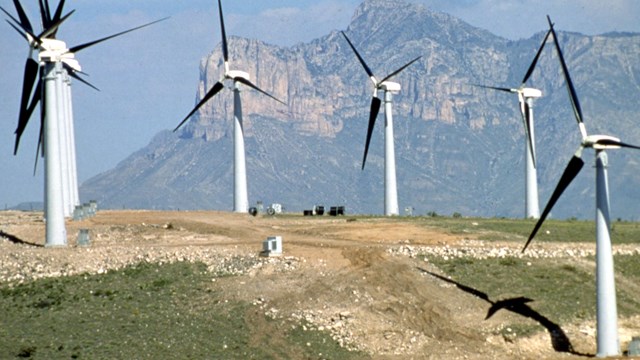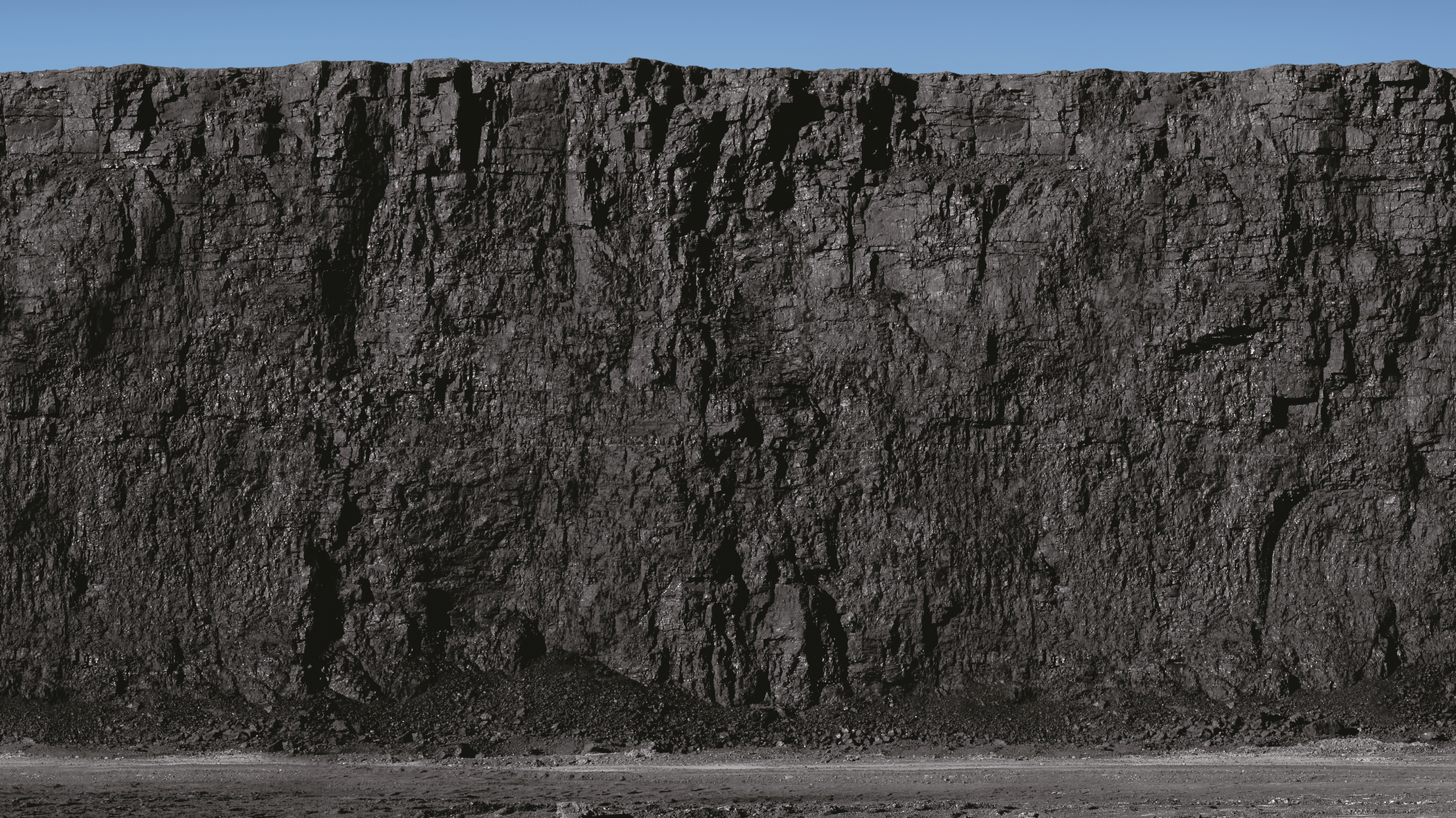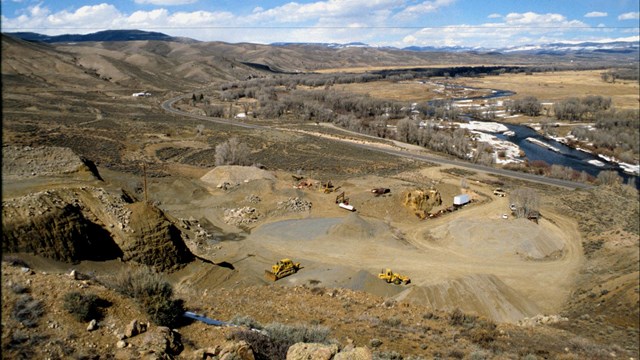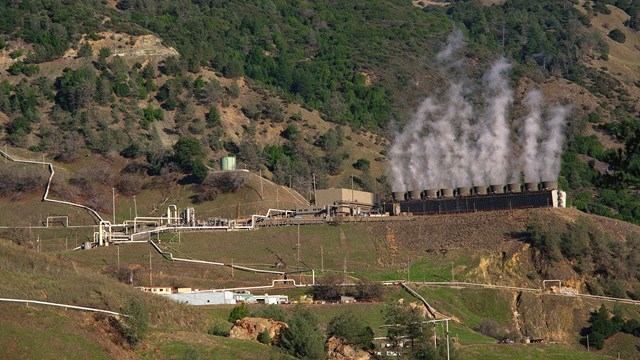The NPS strives to work with adjacent land managers and other permitting entities to help ensure that National Park System resources and values are protected from external energy and mineral exploration and development. Where there is available statutory authority that applies to external energy and mineral operations, e.g., Surface Mining Control and Reclamation Act, the NPS applies this authority as warranted. Otherwise, the NPS coordinates with appropriate permitting agencies and stakeholders to reduce impacts to park unit resources and values.

Development and use of nuclear power, bio-based fuels, wind, solar, hydro-power, and wave/tidal action can effect park resources and values.

Learn how the NPS protects park units from the effects of external coal mining.

Learn what the NPS does in response to mining, oil and gas, sand and gravel on its boundaries.

Learn how the NPS protects thermal features from external geothermal leasing.
Last updated: September 22, 2020
